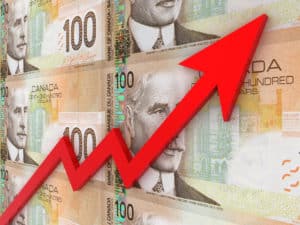During the financial crisis in 2008, when Bank of Nova Scotia (TSX:BNS)(NYSE:BNS) traded at about $38 per share, I thought it was a great deal and bought some shares. It yielded 5.2% at the time. In the months that followed, it continued falling, and in February 2009 it fell below $25 per share.
When it fell 10%, I could handle it, but by the time it fell to $25, a 34% fall, I felt sick to my stomach. I felt like I was catching a falling knife. I was a relatively new investor at the time and had little investing experience.
What did I do?
I knew the big Canadian banks were top quality. Yet I was unable to pull the trigger when Bank of Nova Scotia fell to $25, which was dirt cheap. I had the opportunity to double-down, but I left my cash sitting on the sidelines.
I held on (for dear life) to the shares I bought at about $38. When the price reached above my cost basis per share, I sold for a teeny-weeny profit. From the time I’d bought to the time I’d sold, it was a scary six-month roller coaster ride.
Eventually, I bought Bank of Nova Scotia again at about $52 in 2012. At the time it yielded 4.2%, which I thought was a good yield for the bank.
Relating to the current situation
Bank of Nova Scotia is priced at about $52 per share today. At first glance, it’d seem that my shares went nowhere from 2012 to the present. However, the shares today are actually cheaper than the $38 shares I sold in 2009.
How can that be?! Well, Bank of Nova Scotia at $38 in 2009 equated to a multiple of 10. Today, at about $52 per share, the bank is trading at a multiple of a little over nine.
Additionally, Bank of Nova Scotia yields almost 5.4% today. To visualize the power of dividend growth, if I had held on to my $38 shares, I would be sitting on a yield on cost of almost 7.4%. This already beat the average market return of 7%! The dividends I would have received alone would equal the market return without accounting for future price appreciation.
Conclusion: What should you do?
The last recession was triggered by a financial crisis. Bank of Nova Scotia’s price chart has a V-shape between October 2008 and October 2009. The current price decline has been more gradual. It started around October 2014 and was caused by plummeting oil prices, a weak economy, and a battered loonie.
Bank of Nova Scotia and the other Big Five Canadian banks have been serving Canada for over a century. They have survived numerous ups and downs and will survive whatever is coming our way.
Having lived through the horrific experience of a falling share price with Bank of Nova Scotia the last time around, this time I’m much more calm and experienced.
I think long-term investors like me should review their watch list of quality dividend stocks, which likely includes Bank of Nova Scotia and the other Big Five banks, and determine desired yield points to slowly buy in to the decline.
We don’t know when the market will stop declining, but we do know that eventually it’s going to turn around. In the meantime, you can start collecting juicy yields from the Canadian banks and other quality dividend-growth stocks.







